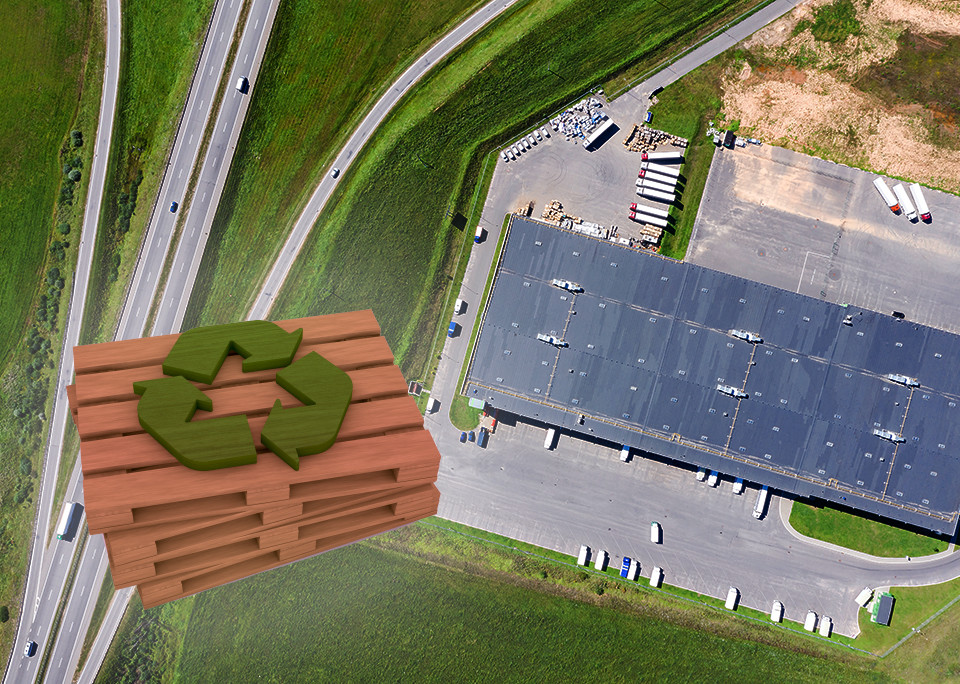DAIFUKU: Green logistics – individual measures not effective
Language selection 📢
Published on: September 15, 2020 / update from: November 10, 2020 - Author: Konrad Wolfenstein
Optimization in material handling promotes a sustainable energy balance - individual measures are not effective
Green footprint through efficient intralogistics
More and more logisticians are thinking “green”. But environmentally friendly and resource-saving intralogistics requires highly efficient and well-thought-out material handling systems. This not only means the energy consumption of systems, but also the efficiency of individual components of a logistics center.
Since 2010, legislation has stipulated that logistics buildings must ensure low-CO2 operations. This means that a large proportion of energy consumption must largely come from renewable sources. By 2020, the federal government has set itself the goal of reducing greenhouse gas emissions by 40% compared to 1990. Germany is expected to become almost greenhouse gas neutral by 2050. Not only politics, but also rising energy costs and customer requirements are putting pressure on a better energy balance. A study conducted by PwC on sustainability in the transport and logistics industry comes to the conclusion that customer requirements are the strongest determining factor for sustainability regulations. More and more companies are therefore committed to an environmentally friendly supply chain - and not just for reasons of reputation. Markus Becker, Business Development Manager at the Japanese material handling expert DAIFUKU, explains: “We have been following Environmental Vision 2020 since 2011, with which we as a company stand for a sustainable environment. Every business activity we do is carried out against the background of environmentally conscious actions. Of course, this particularly includes the development and provision of material flow systems with low environmental impact.”
Optimization potential of logistics centers
According to a final report by the Chair of Material Handling, Material Flow, Logistics and the Chair of Building Climatics and Building Technology at the Technical University of Munich to promote industrial collaborative research and development, buildings are responsible for 36% of greenhouse gas emissions and 40% of energy consumption in the EU and Germany. In particular, lighting, space heating, hot water and air conditioning are crucial points that account for 35% of the building energy consumption of non-residential buildings in Germany. It is already possible to achieve energy savings of almost 50% in a logistics warehouse - for example in temperature-controlled warehouses through heat recovery. It's not just when designing a building that energy consumption can be minimized with the right technology. The energy requirements of intralogistics parameters should also be checked. Green optimization of a logistics center can only work if all energy flows are controlled for their energy consumption. While in a manual warehouse only a small part of around 20% of the electricity consumption is accounted for by material flow technology, intralogistics in a fully automated distribution center is responsible for 85% of the total energy requirement.
Energy-efficient components in intralogistics
Markus Becker is convinced that this trend can be further expanded and optimized in the next few years. “At DAIFUKU we are far ahead when it comes to green logistics. We have been focusing on energy-efficient intralogistics systems for several years.” This is due “on the one hand to the rising costs of energy and on the other hand to political influences”. “When investing in new intralogistics, performance criteria such as throughput or dynamics are no longer the deciding factor,” he observes, and also states: “The energy consumption of the systems is becoming increasingly important in the context of tenders.” Consumption is very important on the masses to be moved. In recent years, DAIFUKU has therefore drastically reduced the weight of storage and retrieval machines. This made it possible to minimize the drive power of the motors used and thus the energy consumption with the same or better dynamic values.
A concrete example is provided by the H-class pallet stacker cranes, which are built up to a height of 40 meters - here 25% of the mass was saved. This was achieved, among other things, through a completely revised mast design. This solution consists of a combination of lattice mast and tubular steel profiles. These design measures are complemented by sophisticated control concepts that, for example, actively counteract mast vibrations during acceleration and deceleration. In combination with an automated storage system, DAIFUKU's STV (Sorting Transportation Vehicle) forms an integrated transport system with high performance. A frame structure with fewer control boxes results in a 9% lower weight, the use of high-efficiency motors reduces power consumption by 10%, and CO2 emissions and energy consumption also fall by 10% compared to previous models.
In addition, DAIFUKU developed the Shuttle Rack M. In addition to the increased throughput compared to a conventional automatic small parts warehouse (AKL), this system reduces power consumption because the ratio of shuttle weight to payload is particularly advantageous
Individual measures not effective
“When optimizing and designing logistics buildings and systems, it is not enough to just improve individual components,” explains Markus Becker. “Even if logistics halls are built according to current energy efficiency standards, their inner workings must be included in the energy planning.” However, the weighting is done in different ways: The final report of the Chair of Material Handling, Material Flow, Logistics and the Chair of Building Climatics and Building Technology of the Technical Department The University of Munich comes to the conclusion that three types must be distinguished in which the weighting of savings potential differs. The manually operated logistics hall can best reduce its overall energy requirements through measures on the building. In a semi-autonomous warehouse, the influence of intralogistics already increases to 70%, as a result of which a fully automated logistics center is 85% dependent on energy-efficient intralogistics. The importance of scalable and energy-saving intralogistics is therefore a crucial point when planning an autonomous logistics warehouse.
DAIFUKU CO., LTD. - the company
Founded in 1937, DAIFUKU is one of the leading international providers of material handling systems. As a globally operating company, DAIFUKU has eleven factories at its manufacturing site in Shiga, Japan. Independent branches in Great Britain and Germany as well as contractual partners in Spain, Portugal and Scandinavia are also part of the company. There are currently over 30,000 stacker cranes and 10,000 systems in use worldwide. Reference customers include BELIMO, Canon, Dagab, DELL, Hammesfahr, ICA, Lever Fabergé, Levi Strauss, Netto, Opel, Riverford, Supergros and many more.
Your contact person at DAIFUKU ⯈ Mr. Markus Becker: Contact form – Telephone: +49 2161 68 33 044
























